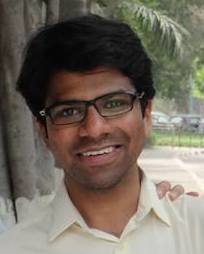Emerging Leaders : Edwin Basil Mathew

Safecity is celebrating the journey of people who have emerged as leaders as our campaigns progressed in their communities through our blog series “Safecity Emerging Leaders“. Read the inspiring stories of these individuals who are passionate about making their neighbourhoods safer with Safecity and have taken action in their own special ways.
Safecity Emerging Leader : Edwin Basil Mathew
My name is Edwin Basil Mathew. I’m volunteering with the Data Analytics group at Safecity. Also, I’m working as a full-time Consultant at Fractal Analytics. Before this, I completed B.Tech in Electrical and Electronics Engineering from Delhi Technological University. My main interest lies in understanding principles of learning that yield insights from raw data and deploying them to boost business growth.
I came to know about Safecity through a college senior, when I told her about my interest in non-profits that realize the power of data for solving common problems in our society. That is when she referred me to Safecity. I looked it up online and was impressed by its motivation to tackle gender-based violence.
Like most responsible citizens, I wanted to give back to the society we grew up in, but in my own way. And Safecity gave me the perfect outlet to work on solving one of the serious problems that plague our world – that of harassment of women and other disadvantaged communities – a problem that’s very very real and relevant in the present age. At the same time, I got to sharpen my technical skill-set by exploring effective channels to leverage data for problem-solving with the brilliant team at Safecity. It also let me put my thinking resources to a good, selfless cause and therefore maintain a happy conscience.
At Safecity, I’ve performed social media analytics by extracting data from Facebook, Twitter and Instagram through dedicated API’s, followed by transforming the data to get actionable numbers. In one project, I had to determine and analyze Facebook post scheduling effects on social media page reach and engagement metrics (which is feedback for us that indicates how popular we have been among fans/followers online) through a statistical hypothesis test. In other words, I had to find if scheduling several posts together fared better than making posts when and where content is available. Post extraction of data through Facebook Graph API Explorer via an access token, we engineered the features to a form suitable for analysis. I had a roadblock though, that the exact dates on which auto-scheduling was active were unavailable. We overcame that by clustering posts lying in close vicinity along the timeline together and treating them as one post and performing an A/B test to confirm the hypothesis. In another project, we used an unsupervised learning algorithm with Levenshtein distance as a metric to automatically correct incorrectly spelled incident titles in crowd-sourced survey responses and classify the incidents correctly. Therein, we also performed batch reverse geocoding of incident sites’ latitude-longitude coordinates to corresponding PIN codes, in order to aggregate the incidents which occurred near to each other.
The insights we derived through data came as an eye-opener to the gross reality of the egregious harassment incidents across India, Kenya, Cameroon and Nepal. Volunteering here exposed to me the pervasive issue of gender inequality at its core and let me take actions instead of being a mute spectator.
For me, I would term the experience at Safecity as gratifying in terms of letting me do pro bono service, as well as didactic in instituting the value of distributing my time most effectively through the daily wave of commitments.

